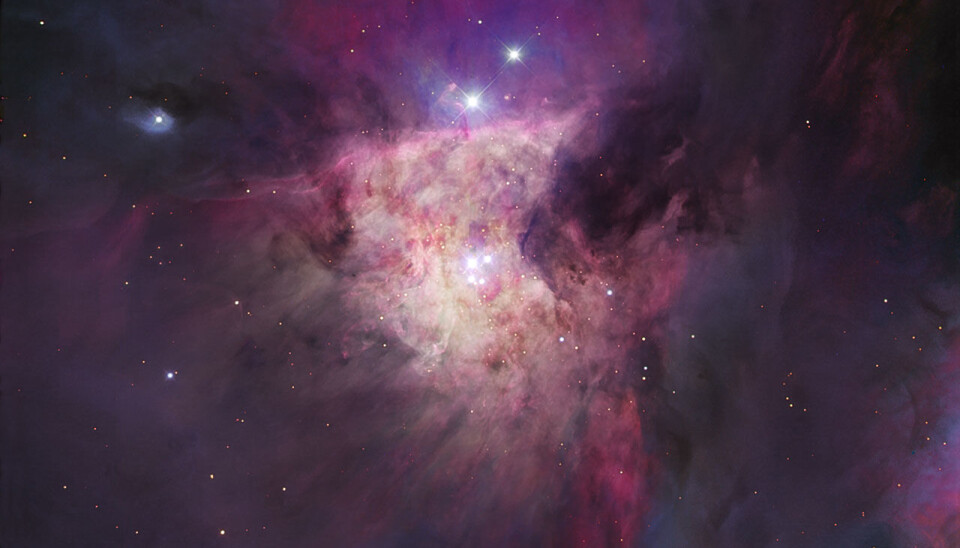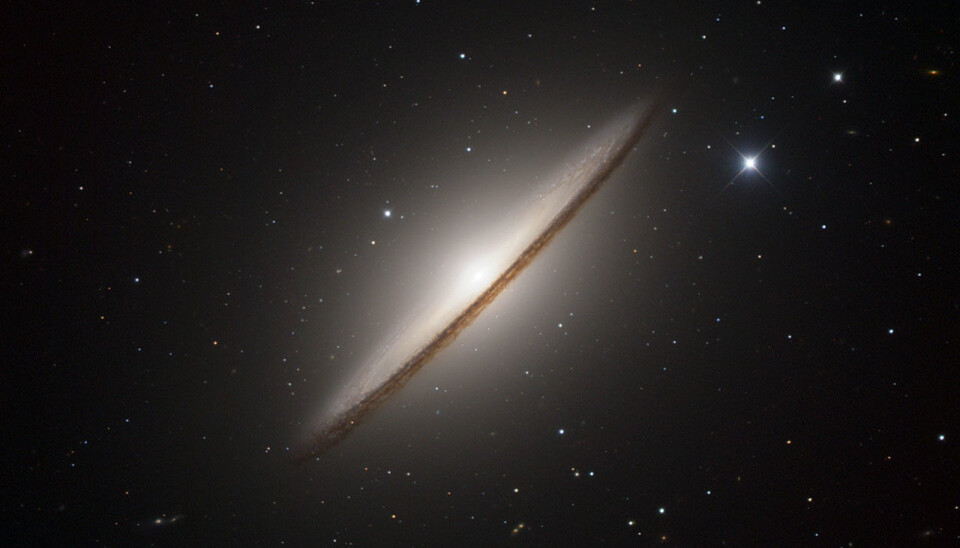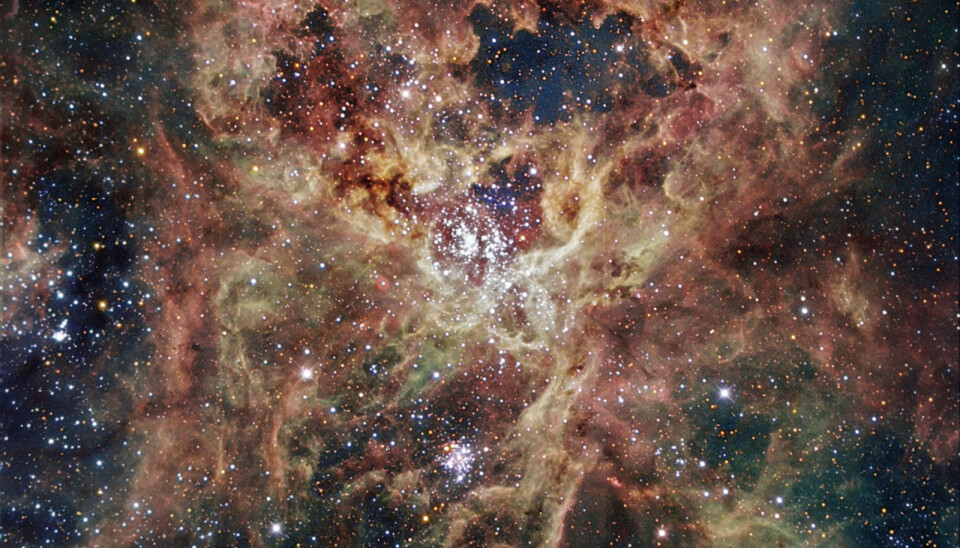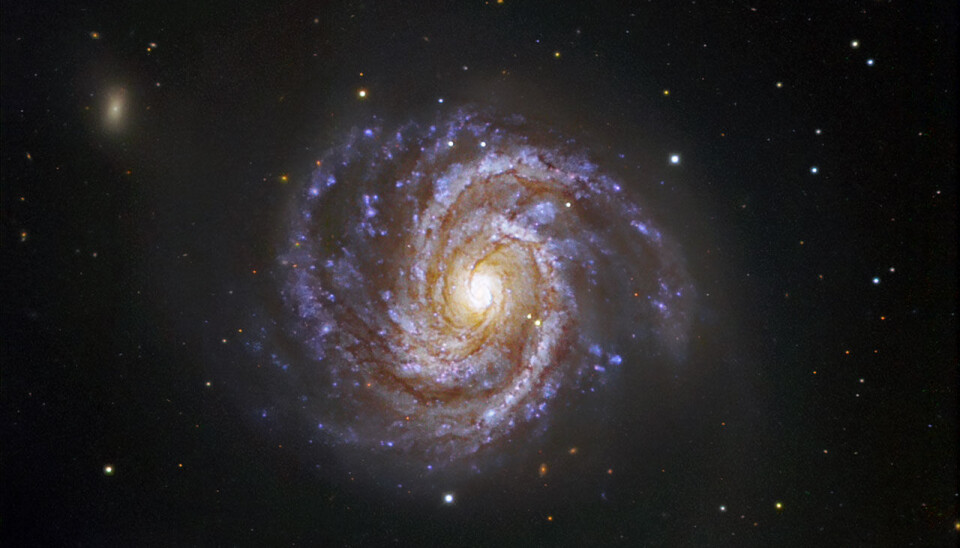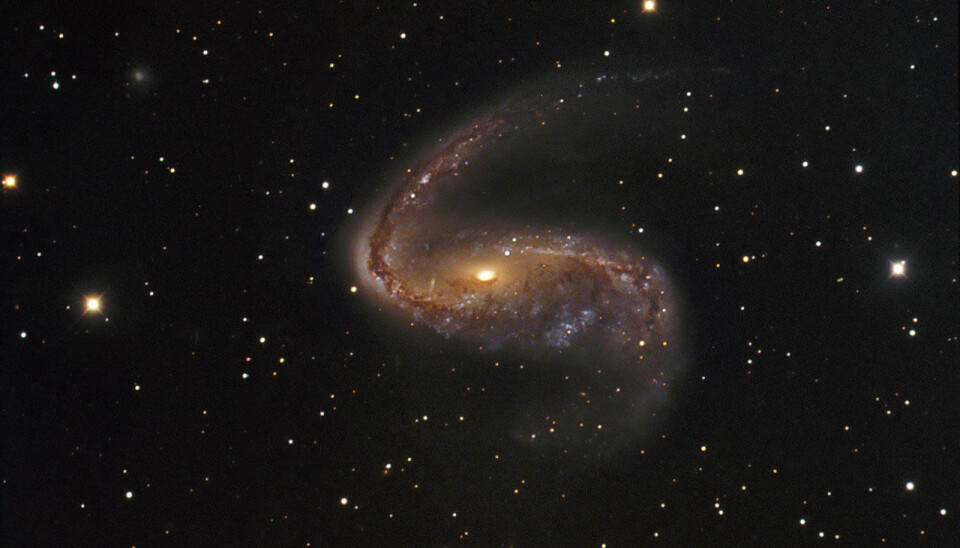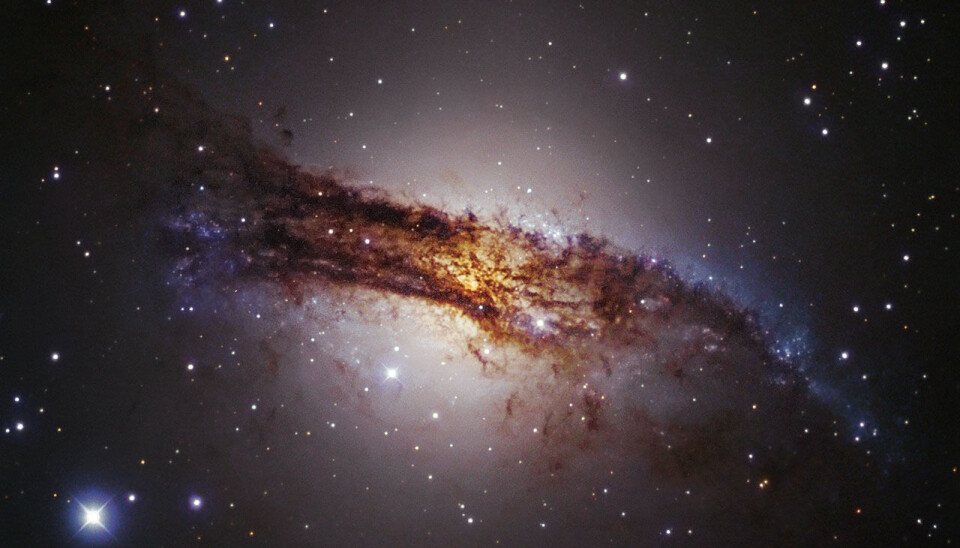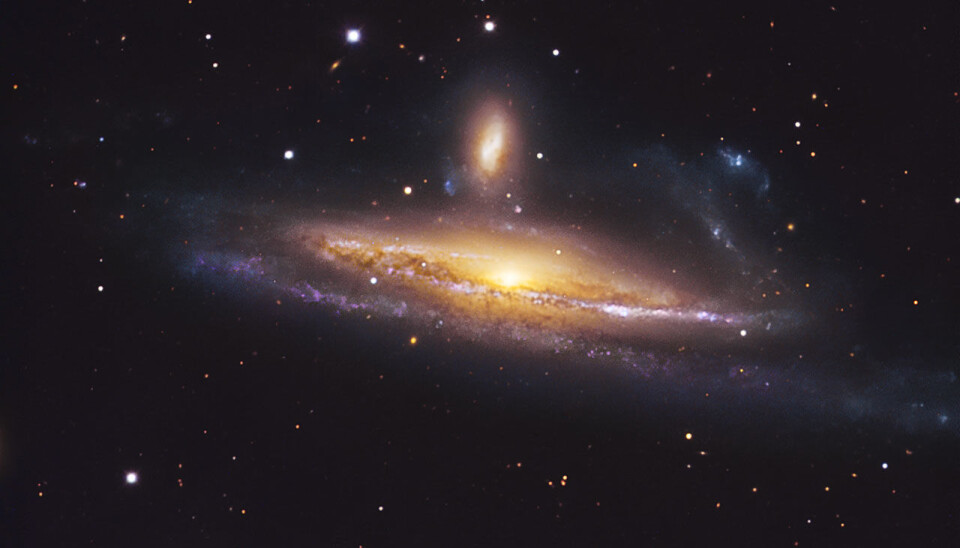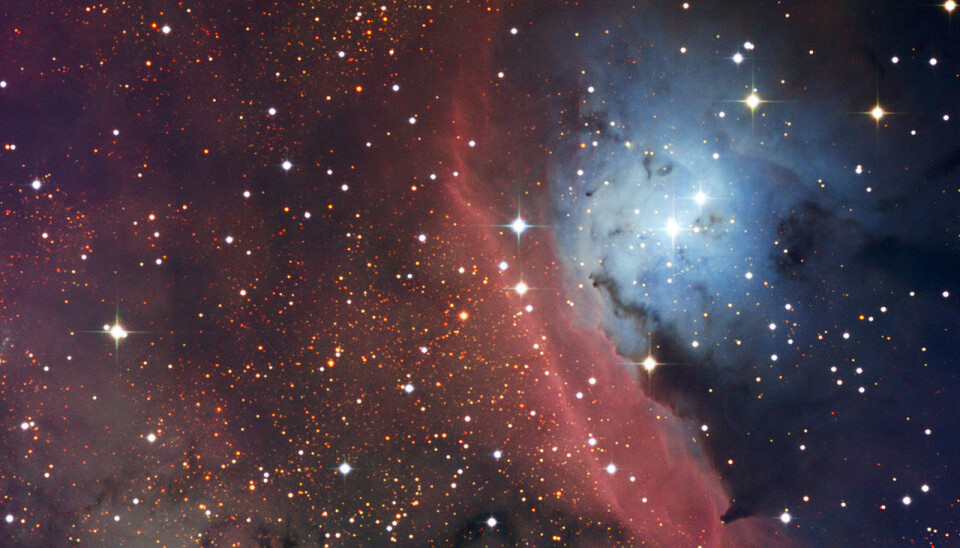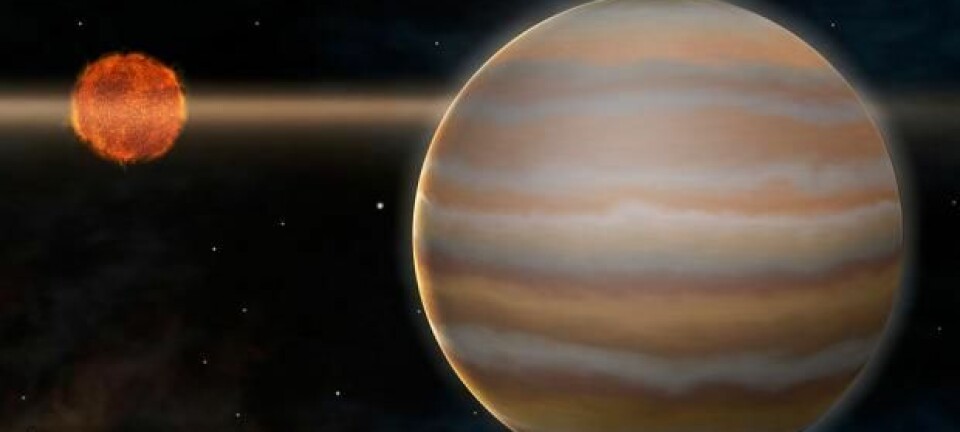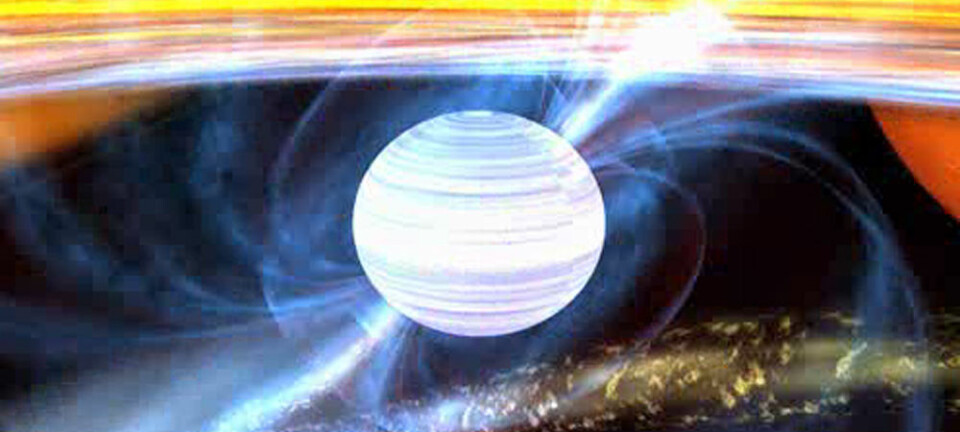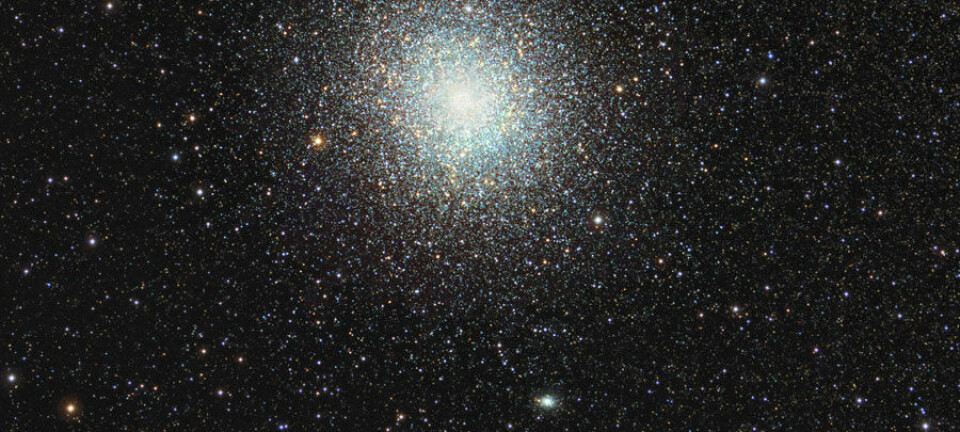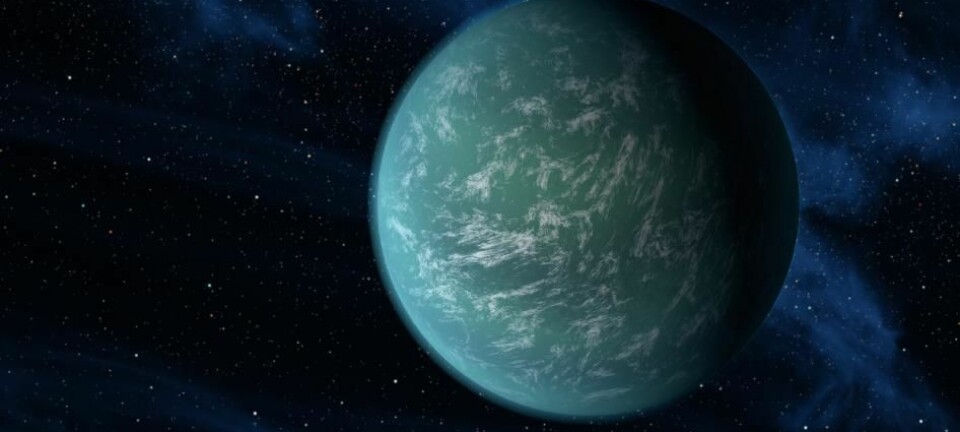New photos of beautiful nebula
The Danish telescope at the La Silla Observatory in Chile has captured a striking image of the star-forming nebula NGC 6559. See the beautiful picture and some of the other pictures from the telescope here.
Nebulas consist of dust and gas, and that is also the case for NGC 6559 on the picture above, which was recently captured by the Danish telescope in Chile.
The nebula is located some 5,000 light years away from Earth and forms part of the Sagittarius constellation.
The NGC 6559 complex is frequently overlooked in favour of its much larger and more famous neighbour, the Lagoon Nebula, but in this image the little one takes the lead role.
Fusion processes light up the stars
The relatively small NGC nebula mostly consists of hydrogen, which is also one of the key building blocks for new stars. New stars are formed in nebulas when they collapse under their own gravity.
The material then gravitates towards a centre of the collapse, and it becomes denser and hotter, eventually triggering fusion processes – the processes that light up the stars.
Young stars make gas glow
This picture can be broken down into three main parts:
- First, there are the young blue stars, which are formed by gases in the nebula.
- These young stars provide energy to the rest of the nebula they are in, giving it a reddish glow. This is known as an ‘emission nebula’ and makes up the red cloud in the centre of the picture.
- Lastly, there is the blue cloud, known as a ’reflection nebula’. This type of cloud consists of larger dust particles of carbon, iron or silicon, which scatter the light from the new stars in all directions. Reflection nebulas are usually blue because the scattering is more efficient for the blue and purple colours than red.
The Danish telescope at the La Silla Observatory is 1.54 metres in diameter and has been in use since 1979. It was recently renovated and converted into a remotely controlled telescope.
-------------------------
Read the Danish version of this article at videnskab.dk
